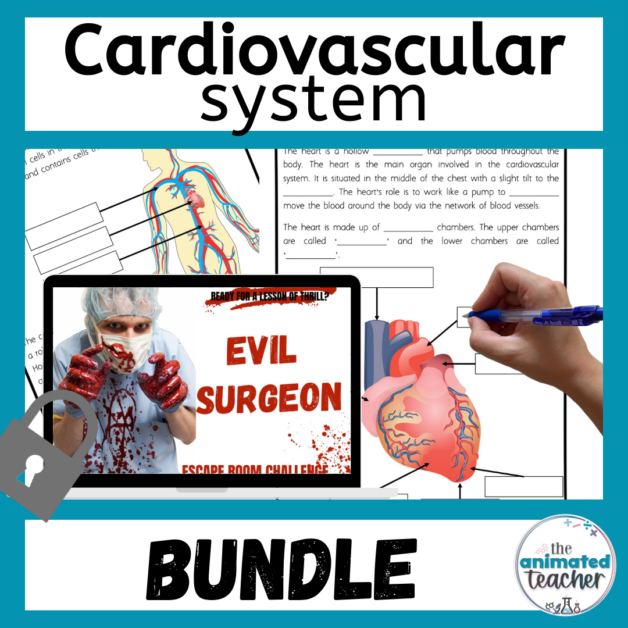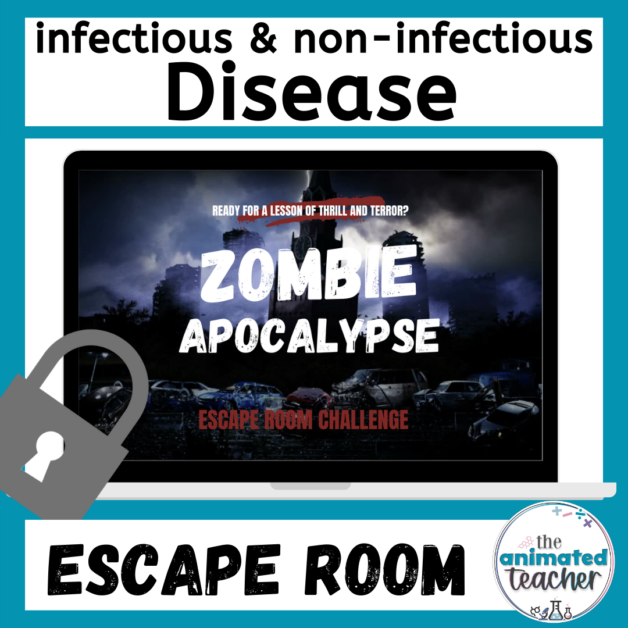Lab Safety 101: for Middle and High School Science Teachers
As a new science teacher, one of the most daunting aspects was trying to get my head around lab safety. There were so many rules and procedures, not just for me but also my students and it was very overwhelming.
This guide will walk you through essential safety protocols, tips for setting up a safe laboratory environment, and provide resources for teaching lab safety effectively in a middle or high school environment.

Disclaimer: This blog post, ‘Lab Safety 101: A Comprehensive Guide for Middle and High School Science Teachers’, may contain links to resources that I have created for classroom use. Read full disclaimer here. activ
Understanding the Importance of Lab Safety
Before diving into the specifics, it’s crucial to recognize the significance of lab safety. The laboratory is a space where students engage in hands-on learning, often with potentially hazardous materials and equipment.
By establishing a culture of safety, you not only protect your students but also foster an environment that encourages curiosity, exploration, and a lifelong love of science.
Essential Lab Safety Protocols
1. Safety Briefings and Demonstrations
Begin every lab session with a safety briefing. Emphasize key safety rules, potential hazards, and the proper use of equipment. Consider demonstrating techniques and procedures to ensure students have a clear understanding.
2. Safety Equipment and Emergency Procedures
Familiarize students with the location and proper use of safety equipment, including eyewashes, fire extinguishers, first aid kits, and emergency exits. Conduct regular drills so that everyone knows what to do in case of an emergency.
3. Personal Protective Equipment (PPE)
Require students to wear appropriate PPE, including lab coats or aprons, safety goggles, and closed-toe shoes. Stress the importance of wearing these items at all times while in the lab.
4. Handling Chemicals
- Store chemicals properly, following manufacturer guidelines.
- Label all containers clearly, including any secondary containers.
- Never mix chemicals unless directed to do so by the experiment instructions.
- Provide proper ventilation when working with volatile substances.
5. Handling Glassware and Equipment
- Inspect glassware for cracks or defects before use.
- Instruct students on proper techniques for handling, cleaning, and storing glassware and equipment.
6. Waste Disposal
Clearly designate and label waste disposal containers for different types of waste (e.g., chemicals, broken glass). Teach students how to dispose of materials safely and in compliance with local regulations.
-
Lab Safety Skills Escape Room Digital
$4.99 -
Sale!
Science skills escape room bundle 5 activities
Original price was: $24.95.$19.95Current price is: $19.95. -
21 Lab safety posters for middle school and high school science
$5.99 -
Fun Lab Equipment Activity Scavenger Hunt
$3.99 -
Following Instructions Experiment Scientific Method
$3.00 -
Bunsen burner licence for middle school science
$2.00 -
Science lab safety lesson and lab safety contract
$5.99
Setting Up a Safe Laboratory Environment
1. Lab Layout and Organization
- Arrange workstations to allow for easy movement and supervision.
- Keep aisles and exits clear of obstructions.
- Provide clear signage indicating safety equipment and emergency exits.
2. Storage and Labeling
- Store chemicals, glassware, and equipment in designated areas.
- Clearly label shelves and containers to indicate contents and hazards.
3. Ventilation and Fume Hoods
Ensure adequate ventilation in the lab to prevent the buildup of fumes or gases. If available, instruct students on the proper use of fume hoods.
4. Safety Inspections and Maintenance
Regularly inspect equipment, safety devices, and emergency systems. Address any issues promptly and keep a record of maintenance activities.
5. Safety Documentation
Maintain up-to-date records of safety protocols, emergency procedures, and any incidents or accidents that occur in the lab.
Classroom resources for teaching lab safety
1. Lab safety contract – this was actually a game changer for me in my middle school classroom. By having a lab safety contract that students signed, it gave students a sense of seriousness and ownership over the lab and their behaviour in it. It also gave me something to refer back to if I felt students weren’t behaving properly, and to remind them of the consequences of it (which they agreed to when they signed it!)
2. Lab safety posters – these are great to have as visual reminders of lab safety protocol, as well as being a part of your classroom decor!
3. Lab safety escape room – want a fun way to review lab safety rules and procedures? This escape room is a super fun way to have students engage in revising these – perfect for the start of the school year!
4. Bunsen burner licence – My middle school students LOVE getting their Bunsen burner licences. It makes them feel like they have accomplished something and the physical certificate is something they really value.
5. Rainbow Lab Following Instructions – this Rainbow lab is a great back to school activity as it impresses the importance of following instructions and taking precise measurements.
Resources for Teaching Lab Safety
1. American Chemical Society (ACS) Safety Guidelines
The ACS provides a wealth of resources, including safety guidelines, lesson plans, and videos to help teach lab safety effectively. ACS Safety Guidelines
2. Flinn Scientific Safety Resources
Flinn Scientific offers a range of safety resources, including safety data sheets, instructional videos, and safety posters. Flinn Safety Resources
3. Occupational Safety and Health Administration (OSHA) Lab Safety
OSHA provides a comprehensive guide to lab safety, including regulations, training resources, and hazard communication guidelines. OSHA Lab Safety
4. National Science Teachers Association (NSTA) Safety Resources
NSTA offers a variety of safety resources, including articles, lesson plans, and safety checklists for science teachers. NSTA Safety Resources
Conclusion
As a new science teacher, prioritizing lab safety lays the foundation for a successful and enriching learning experience. By instilling proper safety protocols, maintaining a safe laboratory environment, and utilizing resources for teaching lab safety, you create an environment where students can explore the wonders of science with confidence and curiosity.
Remember, safety is not just a rule, but a culture that fosters a lifelong appreciation for the scientific process and ensures the safety of all students and teachers.
Note: Always consult your school’s specific safety guidelines and policies, and seek guidance from experienced colleagues or administrators when in doubt about safety protocols.
About the Author

Katrina Harte is a multi-award winning educator from Sydney, Australia who specialises in creating resources that support teachers and engage students.
Spring break guide for teachers
















